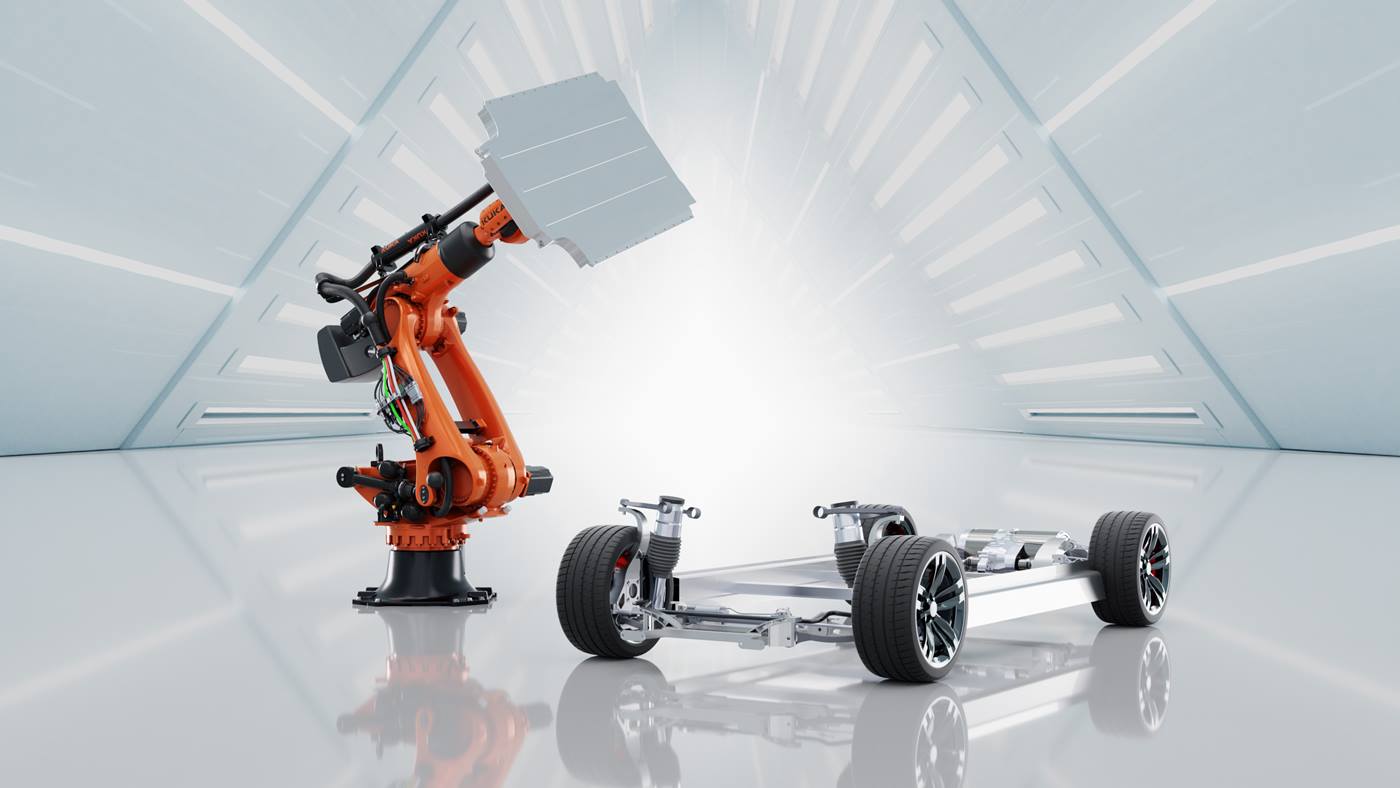KUKA: The new KR FORTEC ultra family: ultimate power, compact design
Technically unbeatable for manufacturing processes that involve heavy and large-volume components
The new KUKA KR FORTEC ultra family includes five robot variants – each ideally suited to a specific application. The KR 800, for example, impressively handles payloads up to 800 kg. The two KR 480 variants reach up to 3,700 mm. The High Inertia variants of the KR 640 and KR 560 increase the maximum permissible mass moment of inertia significantly with extended grippers.
We developed the robots of the new KR FORTEC ultra family in close cooperation with our customers. They are our response to the automotive industry’s changing requirements, with bigger vehicles, heavy batteries and very large components for electric cars.
“Double up”: Innovative double link arm design offers many essential advantages
The most striking feature of the new KR FORTEC ultra family of robots is its double link arm, an innovative design that reduces weight while it ensures high stiffness and accuracy. This reduces the use of materials, which results in higher dynamic performance, optimal cycle times, less energy consumption and a lower CO2 footprint.
Incredibly strong. Extremely compact and light

This content was first published on the KUKA website.


